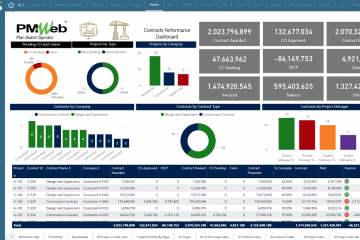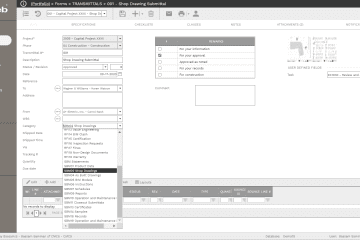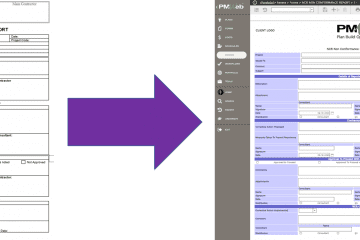It is critical for entities who have selected to invest in capital projects, especially after the COVID-19 pandemic, to understand the high risks that those investments might encounter as well as the low return of investments they have to survive with. Although it is understood that executing a capital project would require monitoring, evaluating, and reporting the engineering and construction management aspects of a project for an investor, monitoring, evaluating, and reporting the anticipated investment revenue is critical as well.
To achieve this, the investor needs to manage the anticipated investment revenues of a project. The overall investment will be a program of the different interrelated but unique projects that need to be managed and completed successfully. Some of those projects will be engineering and construction projects, which could include commercial and residential buildings, shopping malls, schools, and warehouses among others. The revenue projects, which are managed by the sales team, could be the different opportunities to be pursued to generate the anticipated revenue. The revenue will be the projects for sale, lease, and management agreements with hotel operators, public sector entities, regional and international corporations such as banks, logistics and warehousing, supermarkets, movie-theater operators, and retailers among others.
Using a Project Management Information System (PMIS) like PMWeb, there are no restrictions on the number of programs and the number of projects that an investor could have. Using PMWeb to manage, monitor, evaluate, and report the execution of projects has been extensively covered in earlier articles. On the other hand, this article will only focus on monitoring, evaluating, and reporting the performance of revenue-generating projects.
To start with, the PMWeb program module will be used to capture the different investment opportunities that the investor has where each program presents a single investment. Each program will include the different expense and revenue-generating projects that are part of the investment opportunity. The expense projects are the traditional engineering and construction projects needed to deliver the assets of the investment. On the other hand, the revenue-generating projects will be the agreements to manage, sell and/or lease the assets of the investment. Each target tenant, operator, or buyer of the assets pursued by the investor, will be added as a revenue-generating project. It should be noted that some of those projects might be pursued while others might be terminated if the target tenant, operator, or buyer is not interested in the capital project investment. Each revenue project will include the milestone schedule, anticipated revenue budget and any associated adjustments, risks, communications, secured tenancy and sale contracts and changes to those contracts, and actual revenue earned from the signed contracts among others.
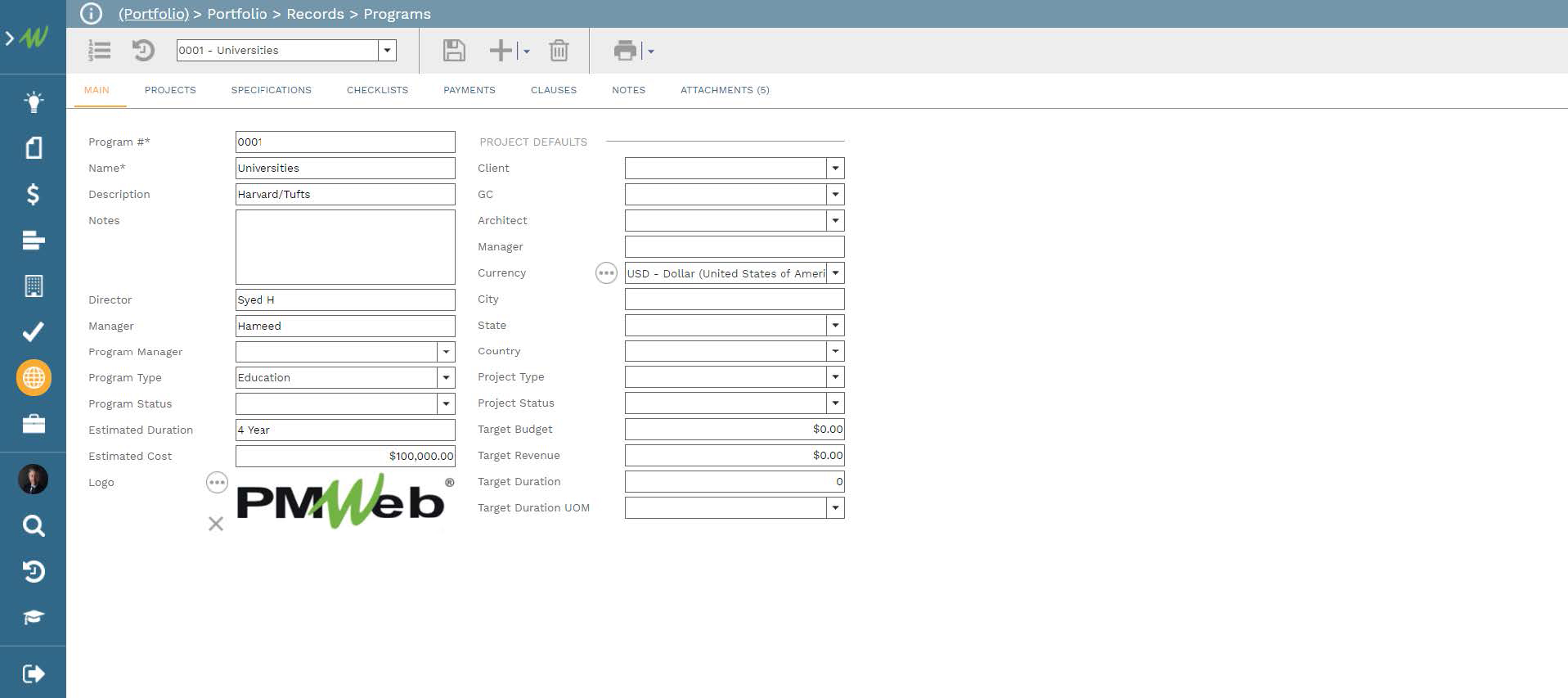
PMWeb scheduling module will be used to create the milestone schedule that each Property Executive needs to adhere to when it comes to signing the target tenants or buyers. This enables managing, monitoring, evaluating, and reporting the schedule performance. The level of schedule details should be aligned with the desired level of control. Activities in the revenue project can be linked to activities in the execution project in case there is a dependency between those activities. The project schedule needs to be updated on a regular basis for which the baseline and periodical updates will be saved to enable reporting on them when needed.
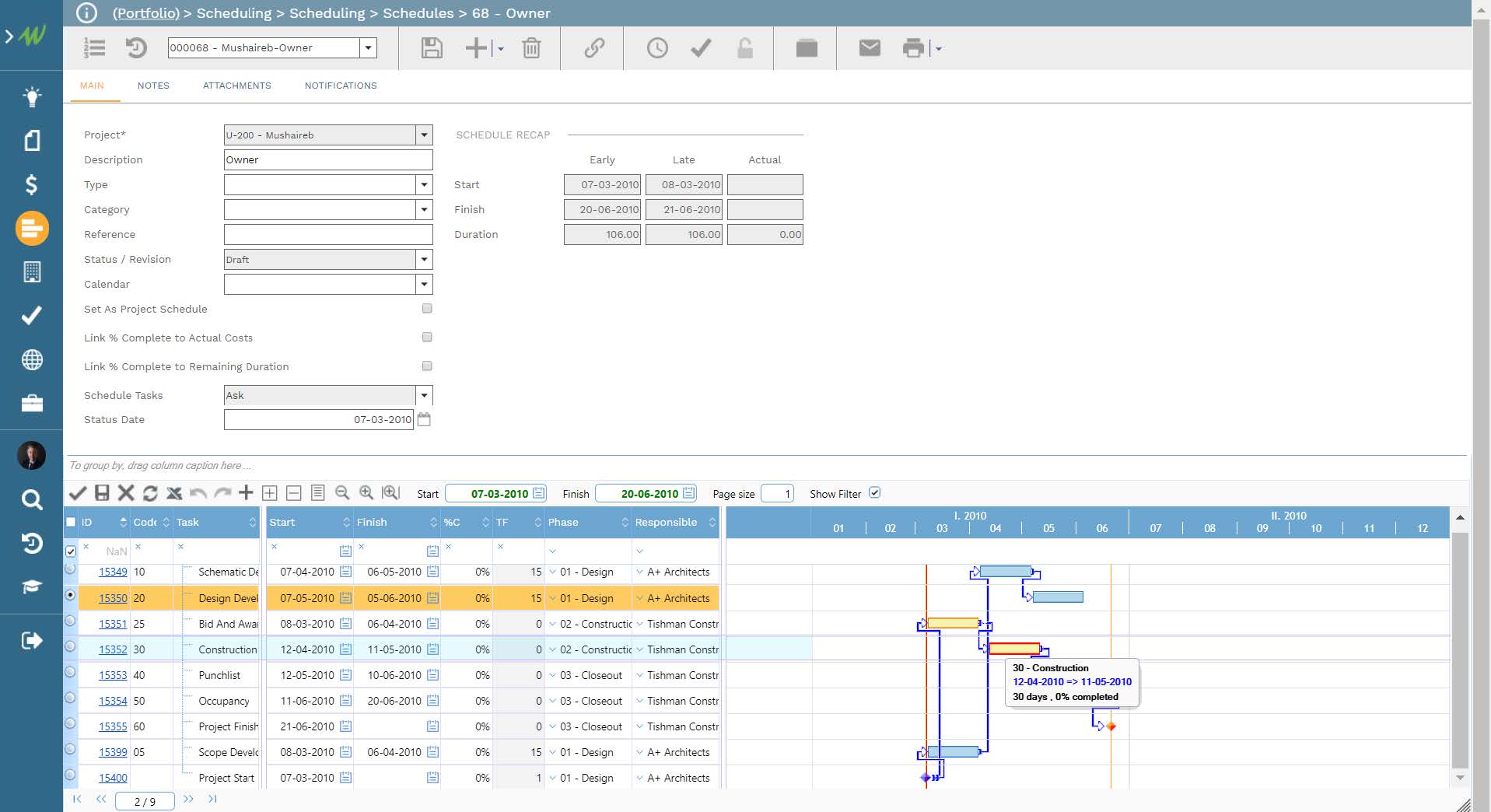
The anticipated target revenue for the assets to be leased or sold will be captured in the PMWeb budget module. The budget for the revenue project will be unit based, where the budget line items will detail the components of the assets to be leased or sold. Those items will be measured in terms of areas, and units among others. The revenue for each unit will be captured. Since PMWeb allows multi-currency per line item, the revenue per item could be in US$, Euro, Yen, Saudi Riyal, UAE Dirhams, or any other currency. The exchange rates can be set to be static or dynamic by extracting the rates from a currency exchange website. This option is very critical for organizations that invest in different countries or have clients from other countries.
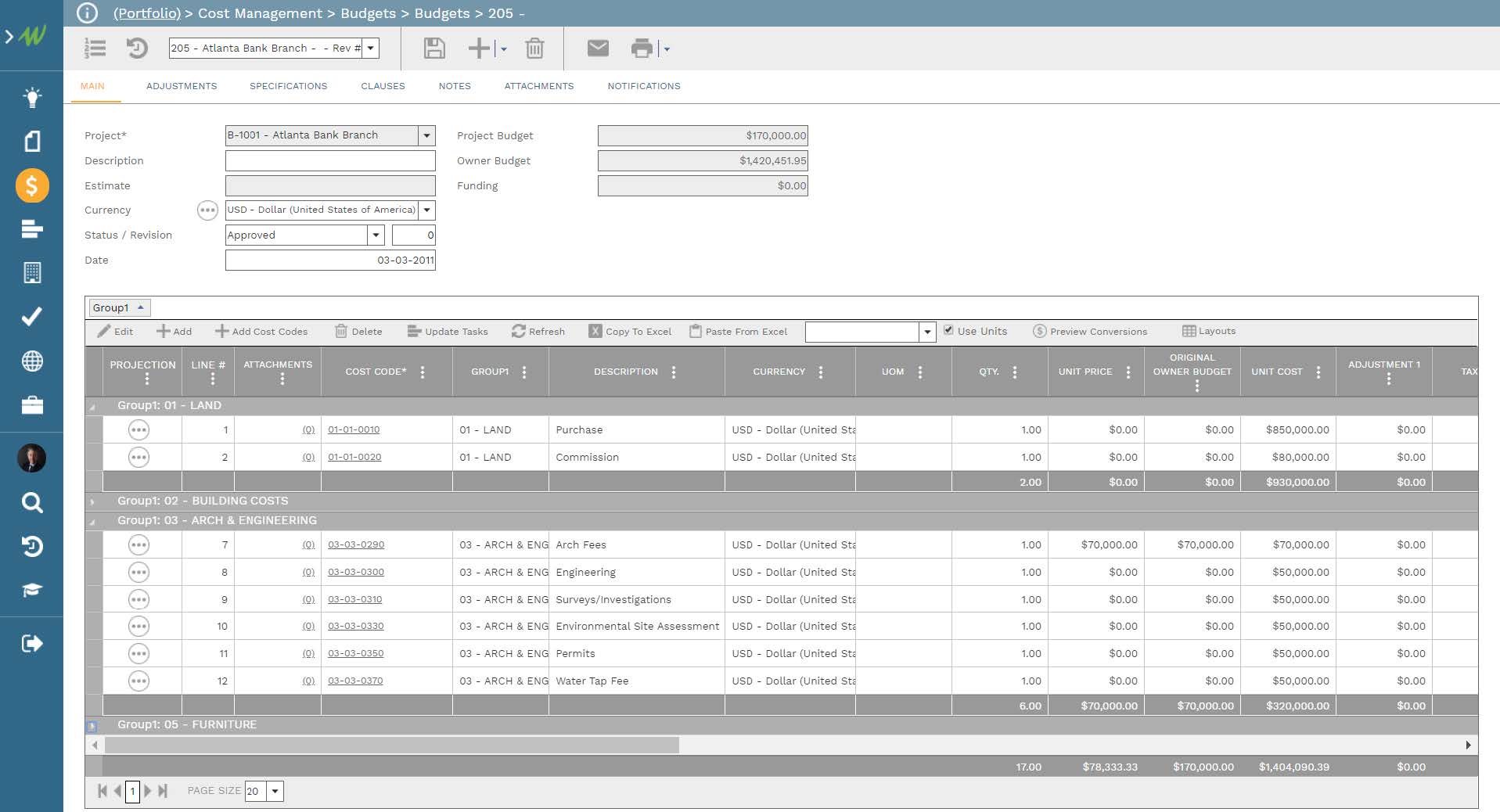
In addition, the PMWeb budget module allows for establishing the expected revenue collection dates for each budget line item. The revenue for each line item will be assigned to the different periods to simulate the realistic dates for collecting the revenue for which part will be during the project’s execution while others could be during the project’s operation which is much longer than the project’s execution period.
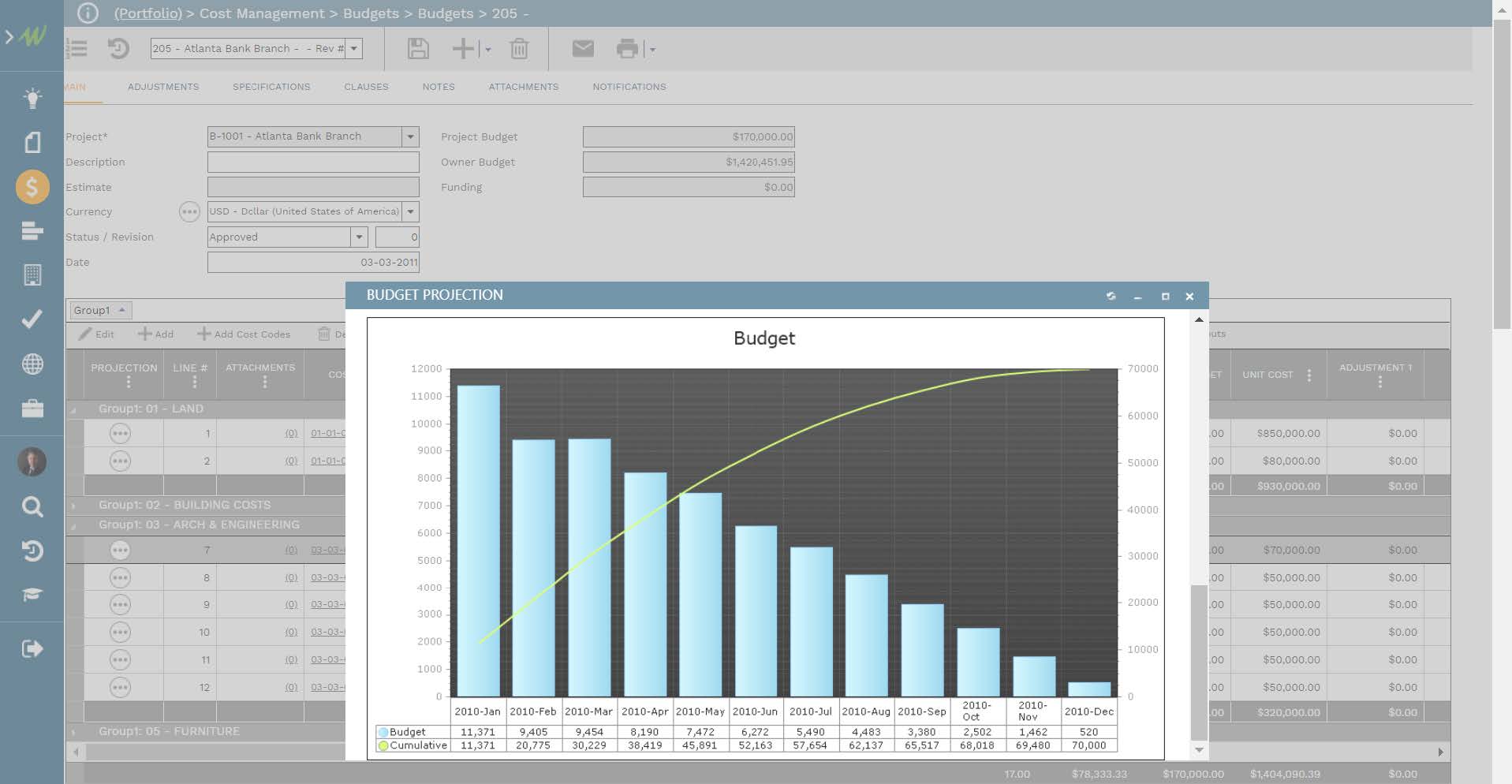
All adjustments that might affect the approved baseline budget, will be captured using the PMWeb budget request module. The sum of those adjustments might be considered as “Original” budget while others will be a “Revised” budget. The Original budget is those budget adjustments that were not initially included in the baseline budget, whereas the “Revised” budget has those budget adjustments that could increase or decrease the approved baseline budget. Further, budget adjustments could be used to transfer a budget from one line item to another. For example, transferring the budget for “space to be leased” to “space to be sold.” Transfers can be also done across projects, or prospect clients if needed.
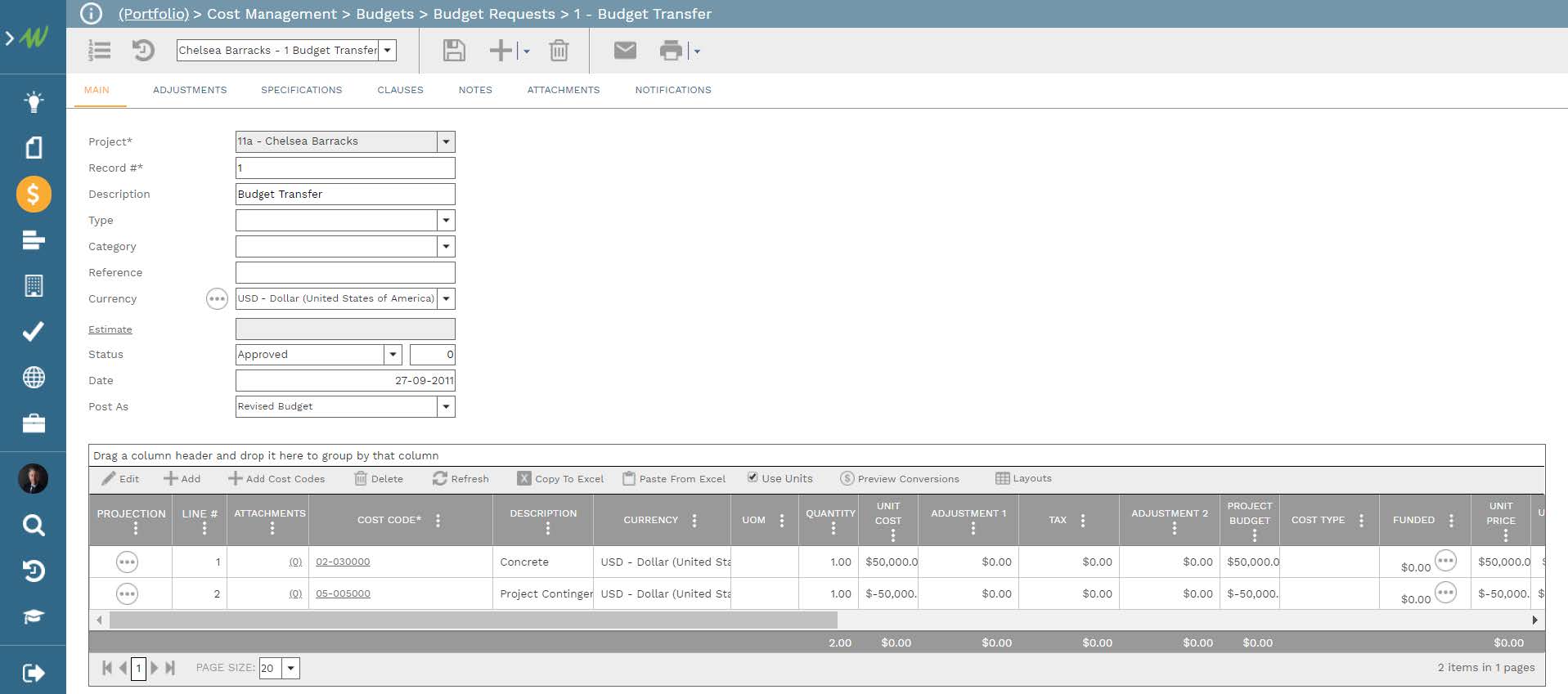
Similar to engineering and construction projects, revenue-generating projects have their type of risks. PMWeb custom form builder will be used to create the risk register checklist for which it will list all possible risks under each category. The sales project manager needs to review the checklist to identify the impact and likelihood of each risk, response strategy category, details of the mitigation events to be taken, and the post-mitigation risk impact and likelihood values. The input of the risk register checklist will be the basis for monitoring, evaluating, and reporting the project’s risks.
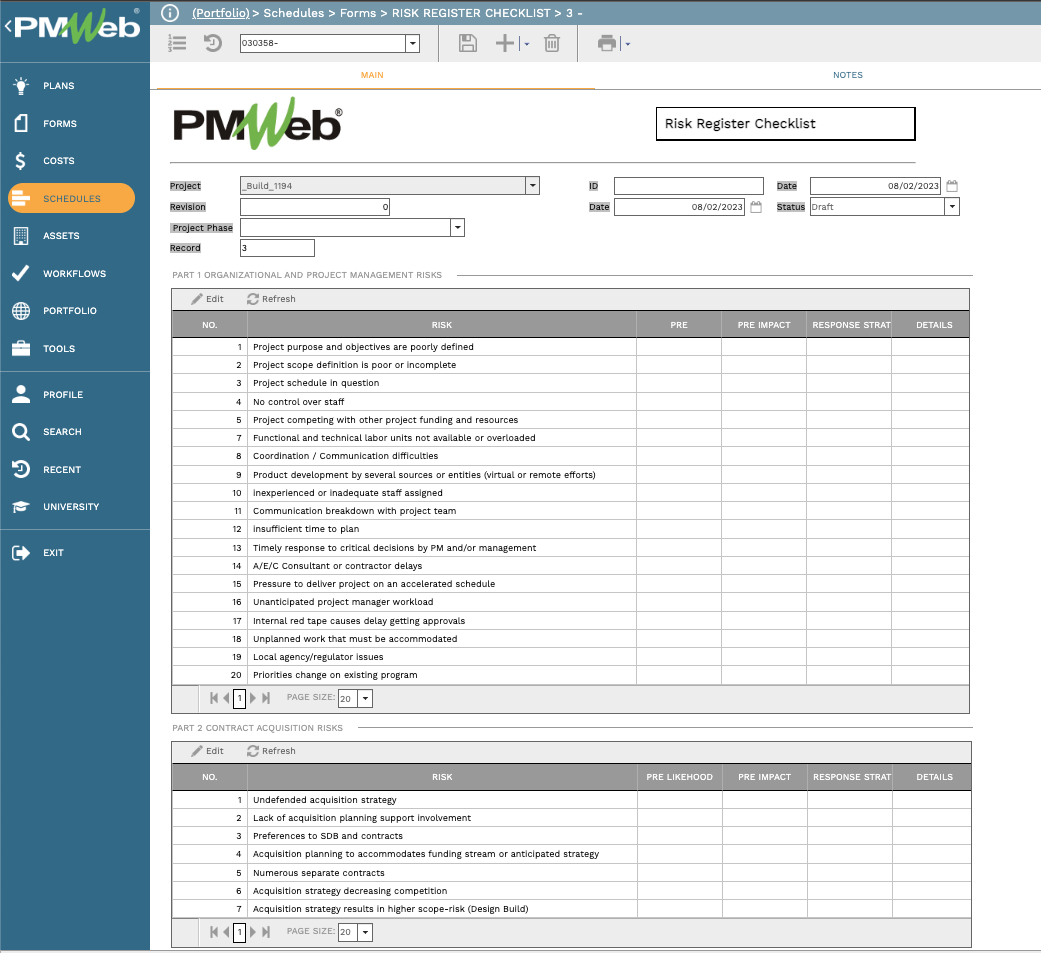
All communications and documents exchanged between the sales team and other members of the investment company, prospect and actual clients, authorities, and banks among others will be captured in the PMWeb document management repository. Folders will be created to organize and store those communications in their desired location. Access rights can be assigned to each folder to restrict access to authorized individuals. In addition, individuals can subscribe to each folder to receive notifications when new documents are uploaded, downloaded, updated with a new revision, relocated, or deleted.
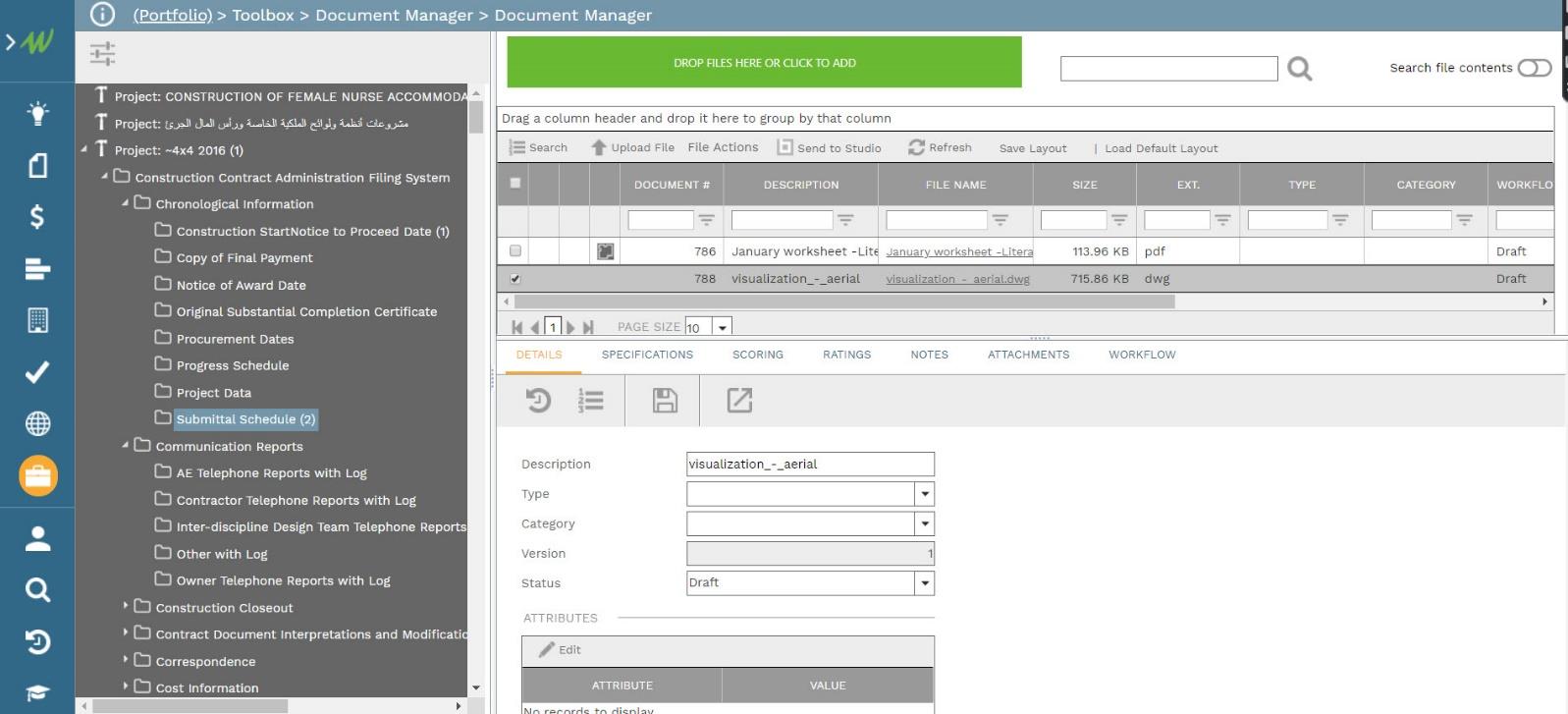
Workflow can be assigned to the uploaded documents to detail the sequence of tasks to be followed in reviewing, approving, and sharing project documents. PMWeb conditional workflow allows selecting different workflow steps for the different document types. The workflows can be project-specific, program-specific or common to all projects managed by the organization. The workflow will automatically notify each revenue project team member of the workflow steps that need to be actioned by him or her. Those notifications can be received via email and/or when the team member logs into PMWeb.
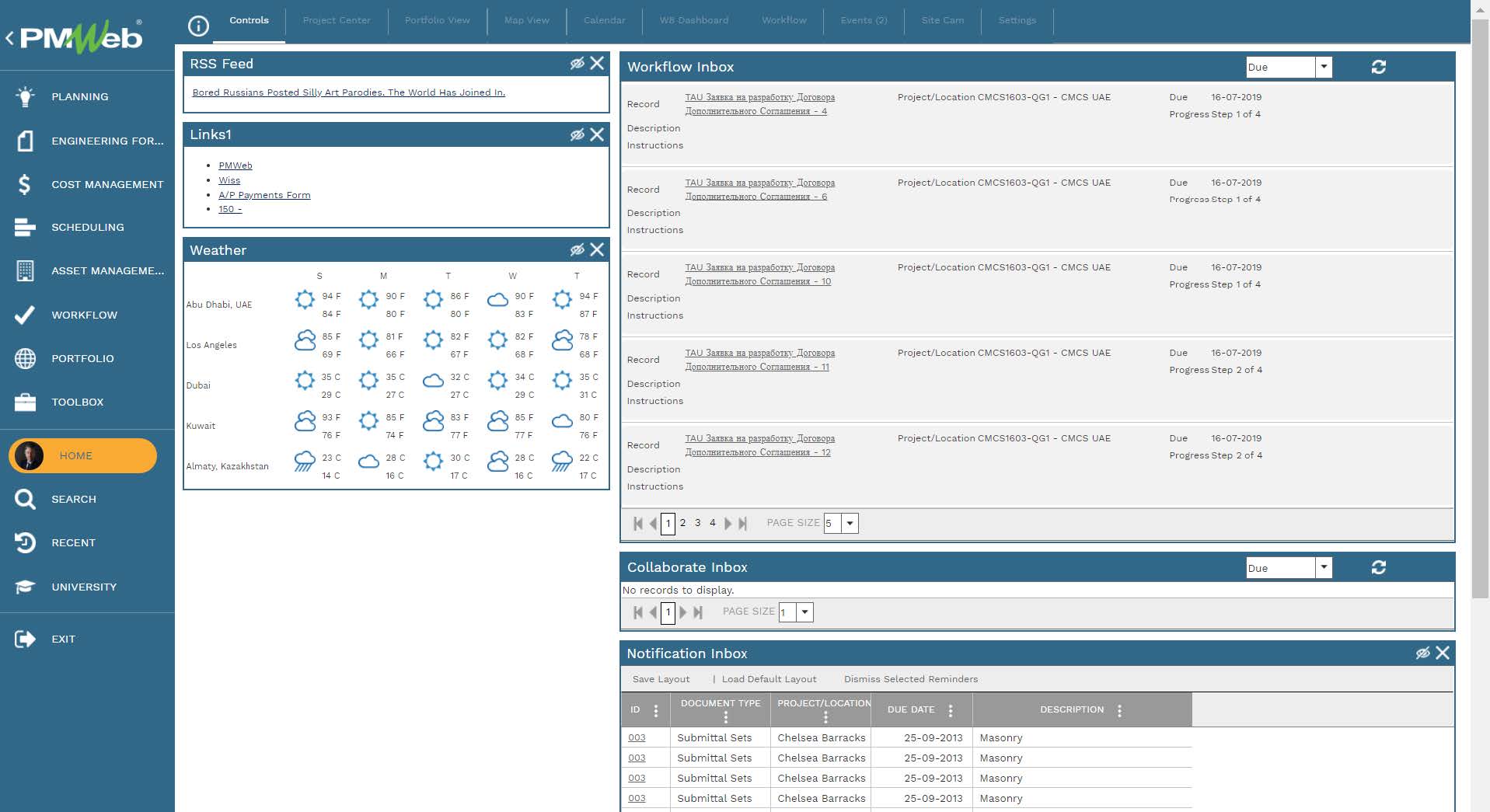
Of course, the workflow can be assigned to all other PMWeb records like the budget, revenue contract, changes to revenue contract, and actual revenue earned among others. For records that have financial implications, the workflow could also include the assigned approval authority levels when it comes to taking actions on related transactions.
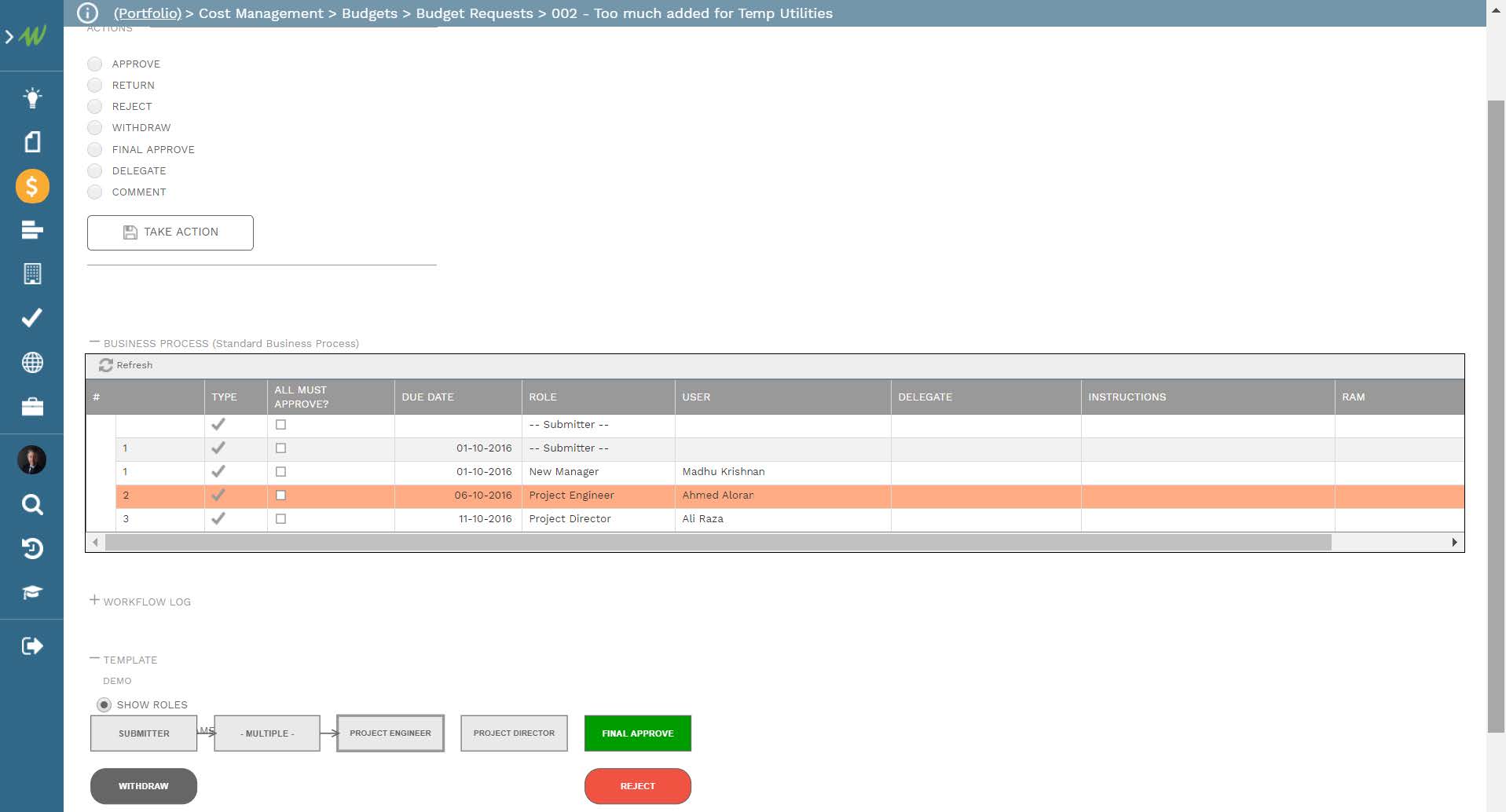
For completed revenue contracts for each project, the PMWeb contract module will be used to capture the details of those contracts. The option for unit rate contracts will be selected to provide the quantity and unit price of all leased and sold assets. The revenue agreement should associate the revenue components with the same cost account levels used in creating the revenue budget. This is essential to compare the actual signed revenue agreements with the approved revenue budget baseline. It is very common that the revenue source for a specific cost account could be contributed by different sales or lease contracts. For example, the retail leased space could be the result of agreements between the investor and different retailers.
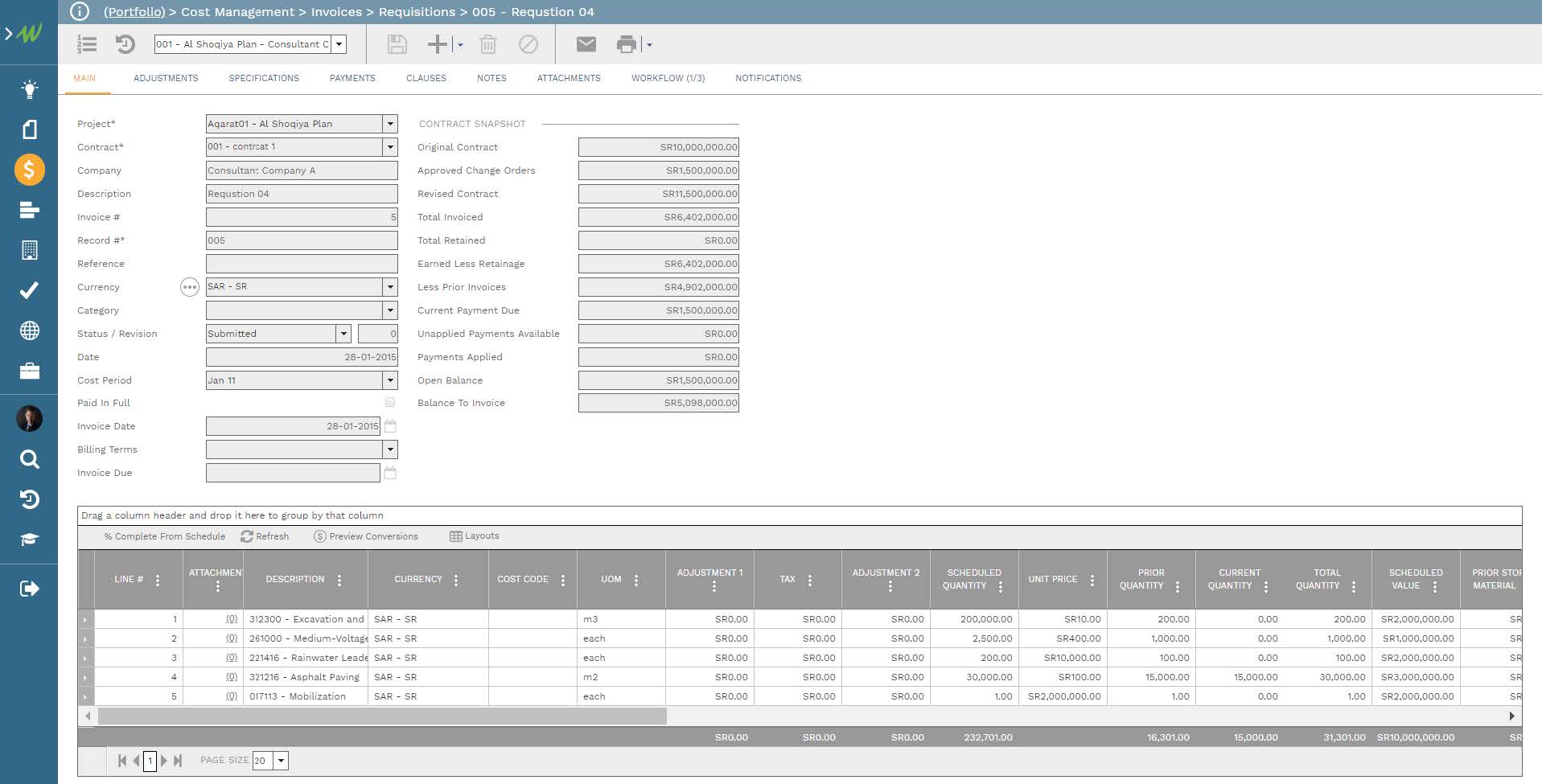
All changes to any lease or sale agreement will be captured in the contract change order module. Those will include all pending and approved changes which could result in increasing or decreasing the contract value. For each change order, all supportive documents including communications that lead to the change should be attached. Those documents will usually be uploaded and stored in the PMWeb document management repository. In addition, it is recommended to have a workflow assigned to the change order module to ensure that all needed reviews and approvals are secured before issuing the final approval on the change request.
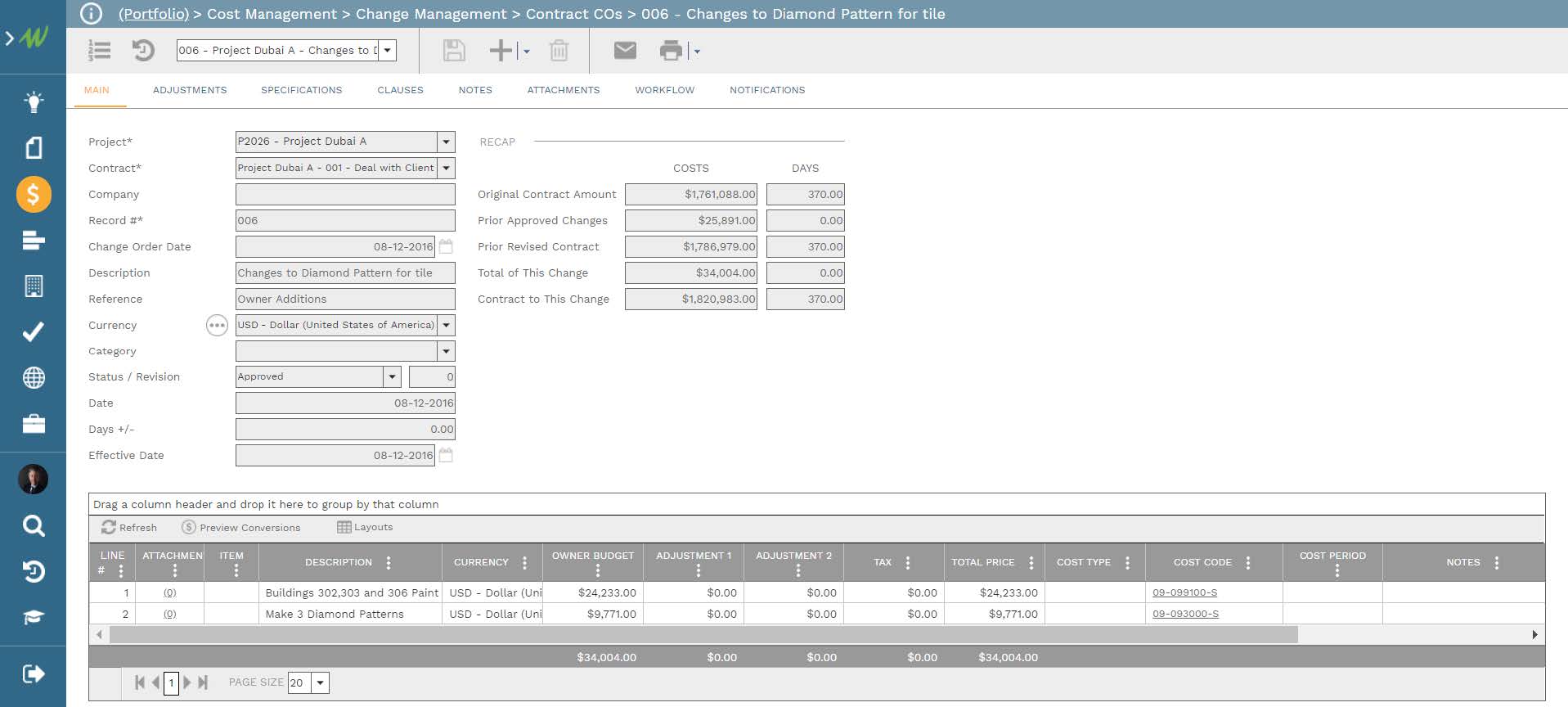
The actual income earned on the revenue contracts will be captured using the PMWeb requisition module. Those requisitions will be issued on the dates agreed to make those payments which are part of each sale or lease agreement. For each requisition, PMWeb allows capturing the actual fund’s receipt details including amounts collected, date, and other fund transfer details.
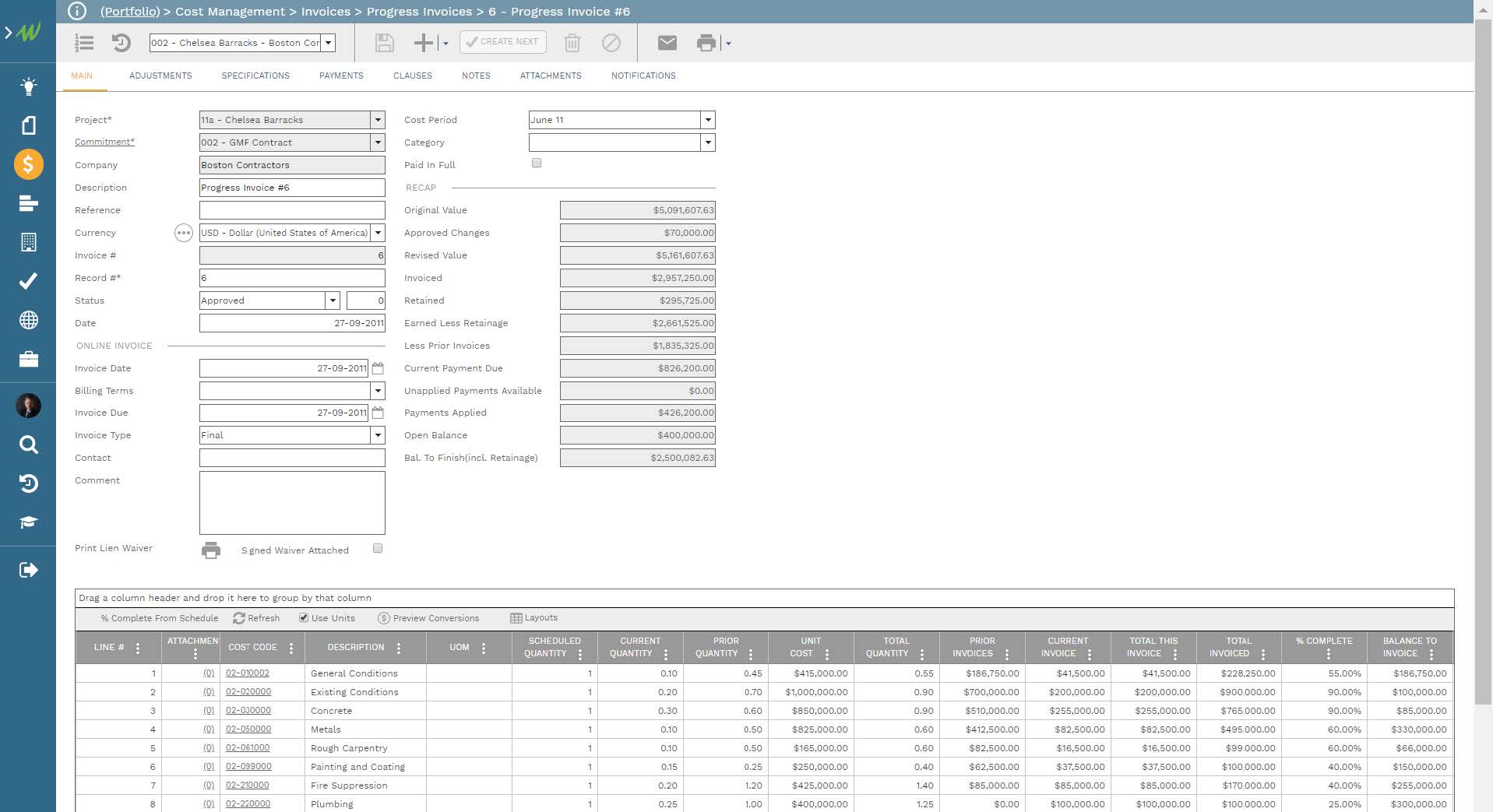
The details of the baseline budget, budget adjustments, and total value of secured sales and lease contracts along with pending and approved changes and actual revenue received will be captured in the PMWeb general ledger module. This enables having real-time revenue details for a single revenue project or all revenue projects for the same investment opportunity or program.
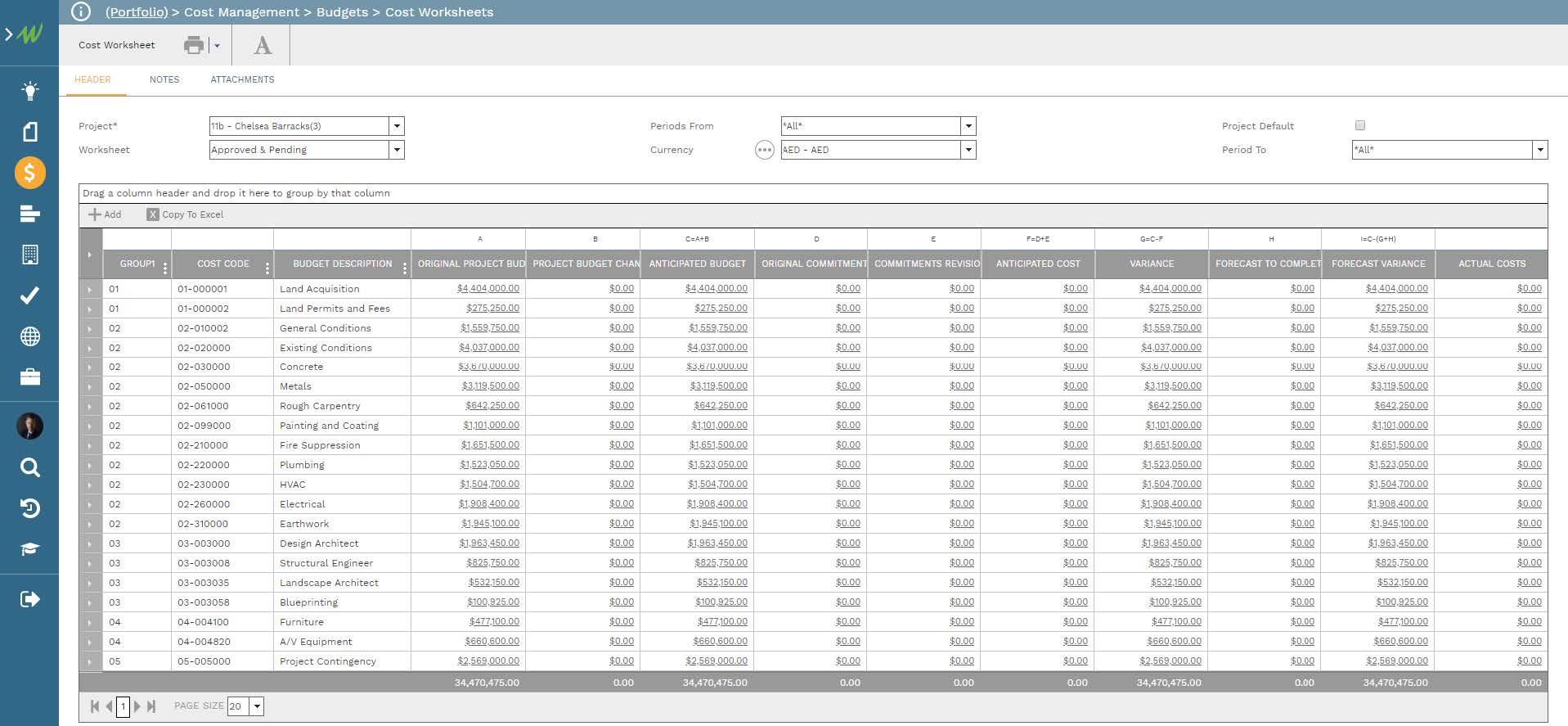
In addition, the cost worksheet could also include the planned, revised, projected, and actual expenditures for the execution projects which are captured in PMWeb commitments, potential changes, change orders, and progress invoices as well as miscellaneous invoices and other non-commitment costs. Further, it could also include the actual cost associated with the revenue projects if those were captured as timesheets, miscellaneous expenses, or agreements with third-party real-estate brokers among others. The cost worksheet can also capture all other expenses associated with the investment such as finance charges, if they were captured by PMWeb modules or imported into PMWeb by having an integration with the investor’s financial system. Different cost worksheet layouts can be created using the Define Worksheet module by either displaying the fields that capture those financial details or by creating aliases to calculate the values to be displayed.
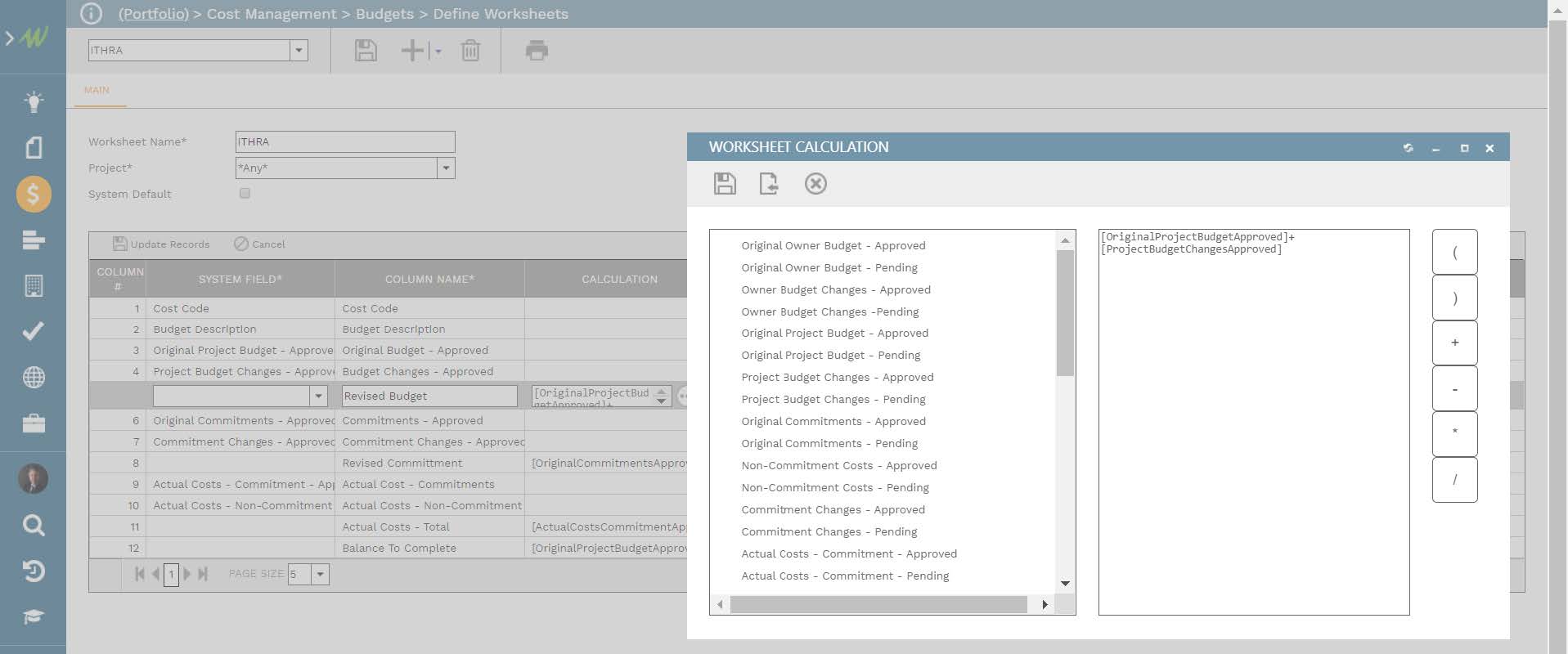
The revenue project data can be reported in any desired format to provide the investor with a real-time single version of the truth on the performance of those projects. The revenue can be grouped by asset category, tenant, or client among many others. In addition, data can be displayed in a tabular format to provide more details on the revenue projects. Of course, the data from the revenue projects can be reported on along with the data from the execution projects which will provide a better understanding of the bottom line of that particular investment.
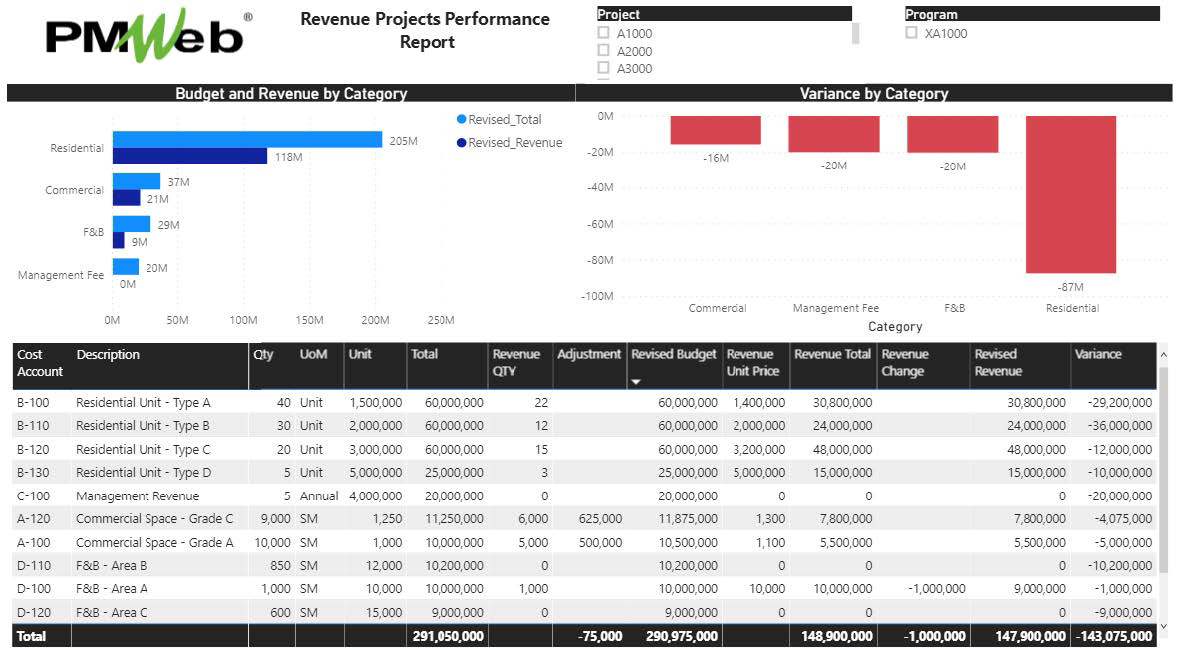
In addition, the same report can be used to report on a single investment or program or a portfolio or investments or programs. Similarly, the reported data can be limited to revenue projects or it can also include the data from the execution projects. It is all about what is the purpose of the report as the real-time trustworthy data is already captured in PMWeb.
